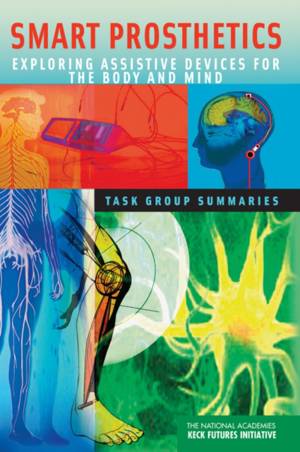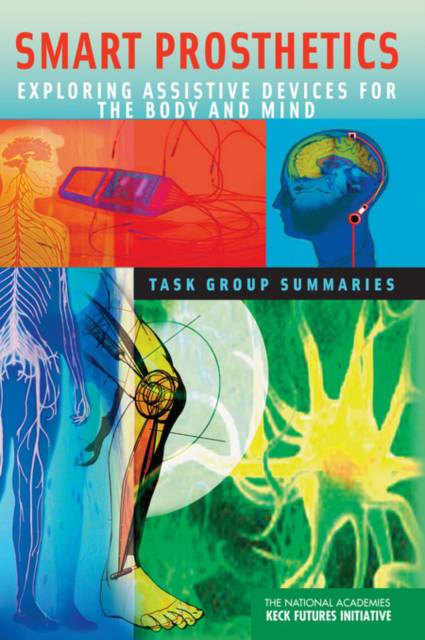
- Afhalen na 1 uur in een winkel met voorraad
- Gratis thuislevering in België vanaf € 30
- Ruim aanbod met 7 miljoen producten
- Afhalen na 1 uur in een winkel met voorraad
- Gratis thuislevering in België vanaf € 30
- Ruim aanbod met 7 miljoen producten
Smart Prosthetics
Exploring Assistive Devices for the Body and Mind: Task Group Summaries
The National Academies, Conference Arnold and Mabel Beckman Center of the National AcadeOmschrijving
The 2006 conference, "Smart Prosthetics: Exploring Assistive Devices for the Body and Mind," attracted scientists, engineers and medical researchers to participate in a series of task groups to develop research plans to address various challenges within the prosthetics field. Eleven conference task groups gave the participants eight hours to develop new research approaches to various challenges, including: build a smart prosthesis that will grow with a child; develop a smart prosthetic that can learn better and/or faster; refine technologies to create active orthotic devices; and describe a framework for replacing damaged cortical tissue and fostering circuit integration to restore neurological function. Representatives from public and private funding organizations, government, industry, and the science media also participated in the task groups. This book provides a summary of the conference task groups. For more information about the conference, visit the Smart Prosthetics conference site.
The National Academies Keck Futures Initiative was launched in 2003 to stimulate new modes of scientific inquiry and break down the conceptual and institutional barriers to interdisciplinary research. The National Academies and the W.M. Keck Foundation believe considerable scientific progress and social benefit will be achieved by providing a counterbalance to the tendency to isolate research within academic fields. The Futures Initiative is designed to enable researchers from different disciplines to focus on new questions upon which they can base entirely new research, and to encourage better communication between scientists as well as between the scientific community and the public. Funded by a $40 million grant from the W.M. Keck Foundation, the National Academies Keck Futures Initiative is a 15-year effort to catalyze interdisciplinary inquiry and to enhance communication among researchers, funding agencies, universities, and the general public with the object of stimulating interdisciplinary research at the most exciting frontiers. The Futures Initiative builds on three pillars of vital and sustained research: interdisciplinary encounters that counterbalance specialization and isolation; the identification and exploration of new research topics; and communication that bridges languages, cultures, habits of thought, and institutions. Toward these goals, the National Academies Keck Futures Initiative incorporates three core activities each year: Futures conferences, Futures grants, and National Academies Communication Awards. For more information about the Initiative, visit www.keckfutures.org.
Specificaties
Betrokkenen
- Auteur(s):
- Uitgeverij:
Inhoud
- Aantal bladzijden:
- 140
- Taal:
- Engels
Eigenschappen
- Productcode (EAN):
- 9780309104661
- Verschijningsdatum:
- 8/04/2007
- Uitvoering:
- Paperback
- Formaat:
- Trade paperback (VS)
- Afmetingen:
- 152 mm x 229 mm
- Gewicht:
- 301 g

Alleen bij Standaard Boekhandel
Beoordelingen
We publiceren alleen reviews die voldoen aan de voorwaarden voor reviews. Bekijk onze voorwaarden voor reviews.









